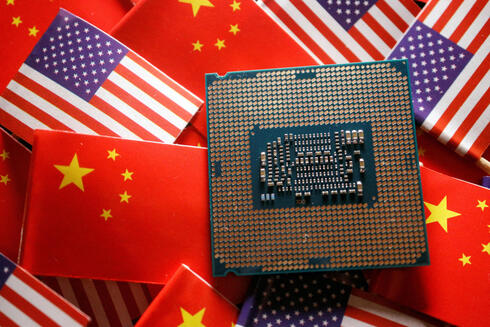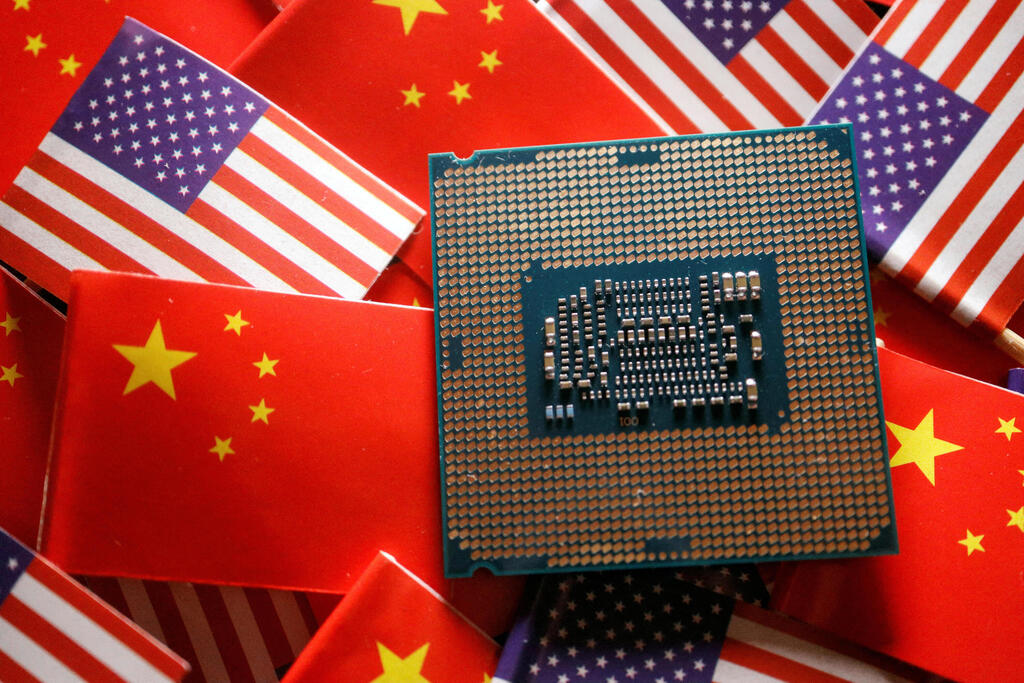
Analysis
China's three main goals in escalating chip war with US
China is expanding the war to the software front, and has also begun to block the use of chips made by Intel and AMD in government computers. The move will allow China to enhance national security, harm the US economically and create strong local competitors for the American chip companies
China is intensifying its chip war against the U.S., and is expanding it to the software front as well. According to a report by the Financial Times, China has begun to block the use of chips made by the American chip giants Intel and AMD in government computers, in favor of chips made by local companies. In addition, Beijing has forbidden the use of Microsoft's Windows operating system and database solutions of foreign countries, in favor of local solutions. The move is expected to harm the revenues of American companies, and to give a boost to the local chip industry that is aiming to become independent, in particular in the production of high-performance chips. It also prepares the ground for a possible backlash from the Biden administration.
1 View gallery


Chips on background of flags of China and USA
(Photo: Reuters/Florence Lo/Illustration/File Photo)
According to Yuval Weinreb, founding partner at Krystal Eight and host of the "Understanding China" podcast, the move will allow Beijing to achieve a triple goal. "China is addressing national security, hurting the U.S. economically, putting pressure on the American government and, no less important and perhaps even more so, is creating local competitors that will be the equivalent of Intel, maybe not today but in three, five or six years," he told Calcalist.
The chip war between the U.S. and China, which is part of the wider trade war that the two countries have been waging since the Trump administration, was launched in October 2022, with the decision of the Biden administration to ban the export of advanced chips to China, and in particular artificial intelligence (AI) chips, as well as equipment which is used to manufacture such chips. Since then, the Biden administration has tightened or added restrictions several times. Among other things, the administration limited the access of Chinese companies to cloud services that provide access to capabilities based on AI chips, and further lowered the performance bar of the chips allowed for export to China, after it became clear that the original limitation is not significant enough and that dedicated chips exported by Nvidia to China have allowed companies in the country to achieve considerable progress in the development of AI capabilities.
China, for its part, did not sit quietly and responded with its own restrictions. The most prominent of which included a ban from May 2023 on the use of Micron-made chips in critical infrastructures; a ban on the export of gallium and germanium from July 2023 - two minerals that are at the base of the chip industry; and a September 2023 ban on the use of the iPhone as an official device by government employees.
At the same time, China began to invest resources in nurturing the local chip industry. A key moment was registered last September, when Huawei launched a new smartphone that includes support for fifth-generation mobile internet, despite sanctions from 2019 designed to prevent it from accessing communication chips with this technology. In February, the Financial Times reported that China is making progress in reducing the gap in its chip manufacturing capabilities, and will start producing chips with a 5 nanometer architecture this year (the most advanced chips today are based on a 3 nanometer architecture).
Now, China is taking another step, perhaps the most dramatic yet, imposing significant restrictions on Intel and AMD chips. According to the Financial Times, new Beijing regulations, published in December and only recently implemented, ordered government ministries and agencies to use only "safe and reliable" local alternatives to AMD and Intel chips. The list of approved suppliers includes 18 processors made in China, including Huawei and Phytium, both of which are banned in the U.S.
The ban could have material consequences for the revenues of both companies. In 2023, China accounted for $14.58 billion (27%) of Intel's total revenue and $3.45 billion (15%) of AMD's revenue. It is not known how much of this income comes from sales to government bodies and how much from sales to private bodies. However, there is no doubt that the companies are expected to suffer substantial damage both directly from the boycott as a result of the loss of revenue from the government, and indirectly as a result of the preference of private companies to purchase chips from approved manufacturers, in order to please Beijing or increase their chances of winning government contracts and tenders.
Weinerb explained that although Beijing's step is somewhat surprising, it is ultimately called for. "It is surprising that it came out suddenly, but it is required because it fits the general spirit of China's separation from the U.S., and a division into two separate technological stocks - one made in China, and the other made in the U.S. and the West. It reaches all sectors, and the chips have been at the heart of the matter for a while," he said.
Weinerb added that in the process China hopes to achieve three goals: "First, matters of national security. In recent years, we have seen how national security takes precedence over everything else - over economic and technological development. Second, it is a way to hurt the American companies, thus putting pressure on the U.S. For Intel and AMD, the Chinese market is their largest in the world. At the moment they have only been banned from government computers, but it could also reach government companies that are a large part of the Chinese economy. And if government companies are asked not to use these chips, then private companies will also be wary of doing so, even if it is not against the law. In short, it's going to hurt Intel and AMD's revenue significantly, even if not immediately.
"The last point: the Chinese are trying to create their own technological ecosystem from end to end. And one of the classic ways in which the Chinese build such capabilities is to use the demand of their huge domestic market to create demand for the local companies. At the moment, nobody will buy Chinese-made chips which are supposed to be equivalent to Intel chips. But if there is no choice, they will start buying them. And once they buy them, the local companies get a market share through which they can significantly increase the scope of their activity. And through this they also learn things like supporting customers, and thus the local companies will grow."













